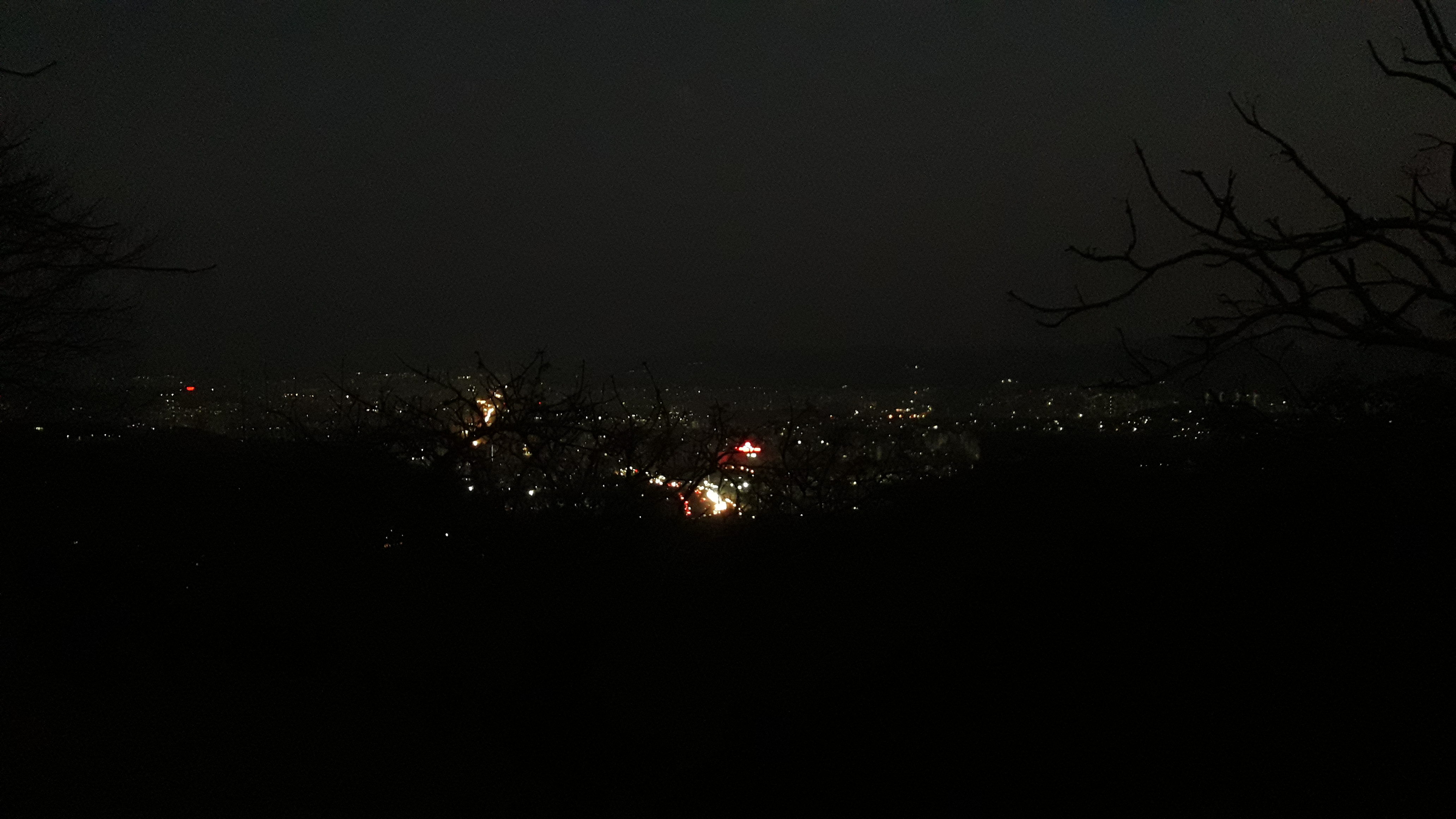The city at dusk

I suppose that men have been climbing mountains for thousands of years now. Frustration, Sadness, and $(THIRD_THING) have been known to man since the time they started living in “society”, and have become 100x after communication became more and more advanced (enabling you to compare yourself with more and more people who you had to be “better” than). Put these two things together, and you get a trope- that of a sad/frustrated/lonely person climbing a mountain or some equivalent structure that has elevation, and sitting down at the top, looking over a magnificent view. In fiction, this leads to an Aha! moment that gives them the strength to overcome their troubles. In real life, this gives people a few moments of peace. Another famous “high place” trope is Sitting up late at night with friends, possibly in a terrace or a balcony, talking about “life”. There are others, of course, which consider the other meaning of “high”, but I’m not interested in those.
Over the last few years I have become quite attached (addicted?) to this one hill. Its identity will be obvious to readers who know me personally. I’ve been visiting this place regularly for years. And for a long time, I’d only noticed natural beauty. In monsoon, the sun peeps in and out of the gray clouds, each of them bearing some semblance to a fantastic beast, its light scattered (or refracted, or whatever) in all directions, each part of the sky showing a different shade of orange. Sometimes, the rays of the setting sun seem like the embers of a dying furnace, not harsh, but giving off warmth. In the spring, pink blossoms adorn the otherwise dry trees. (Apparently, these have been imported from Africa, because they grow well without requiring too much water. This allows “the government” to do afforestation using minimum resources). The old stone quarry fills up during the monsoon, and a small pond forms in one corner. We used to sit down on its shore, joking about it being “that lake where 3 Idiots was shot”.
Anyway, recently, I noticed a new component of the horizon at (and after) sunset- the city! The concrete jungle that is Pune had been growing steadily for years, and had reached a point where there was no purely “natural” space left. And it was.. amazing. Interspersed, the greenery and the handsome buildings make up a wonderful view. This got me thinking- I’d probably hate living in a world where there is no printed text, internet, or machines. Industrialization does not deserve all the hate that it gets. But I digress. The point of this piece is not social commentary. Back to the view.
I sit at the hillside’s edge, looking at the horizon. The sun sets. At twilight, the city lights up, and its bright lights are juxtaposed with the streaks of the retreating orange sunlight. A cool breeze blows. The many sounds of the city- vehicles, car horns, and that of the wind, mixed together, remind me of the sea. I’m overcome by sudden urge to pull out my phone and take photos, which I suspect I won’t look at again. But for once, the photos look almost as good as the “real” view, and I end up looking at them multiple times over the next month. And suddenly, twilight becomes my favourite time for visiting my favourite place.
When the sunlight disappears, the many colors of city lights become distinguishable- shades of yellow, orange, red, and white. I walk back, my head turned, still taking in the city lights. I feel at peace. I’ll be back.
And now.. amateur photography.
I wonder that the reflecting surface is..

I suppose the sun’s colors are the best part of this picture.

Believe it or not, but this is not a timelapse.
